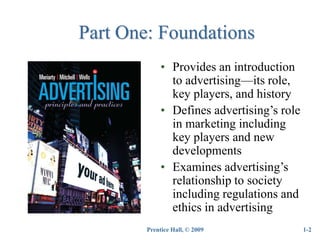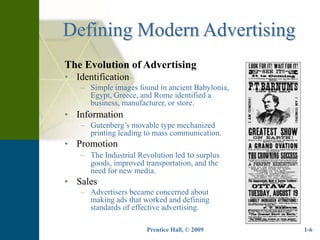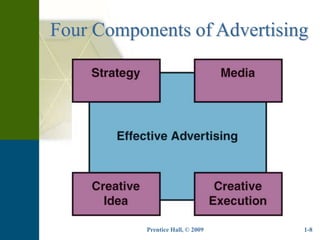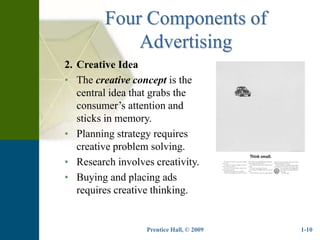This document provides an introduction to advertising, including its key components, roles, types, and players. It discusses advertising's role in marketing and society. The four main components of advertising are strategy, creative idea, creative execution, and media planning/buying. Advertising serves marketing, communication, economic, and societal roles. Current developments discussed include interactivity, integrated marketing communication, and globalization. The document examines how advertising has evolved historically and defines what makes an advertisement effective.









































